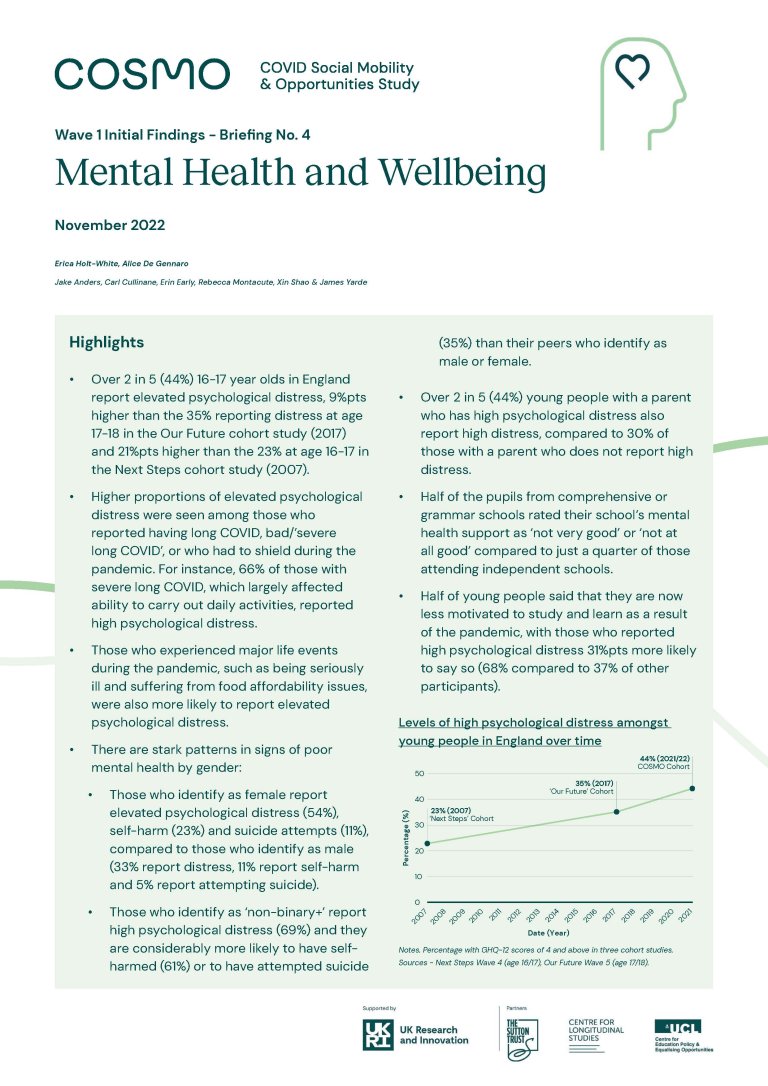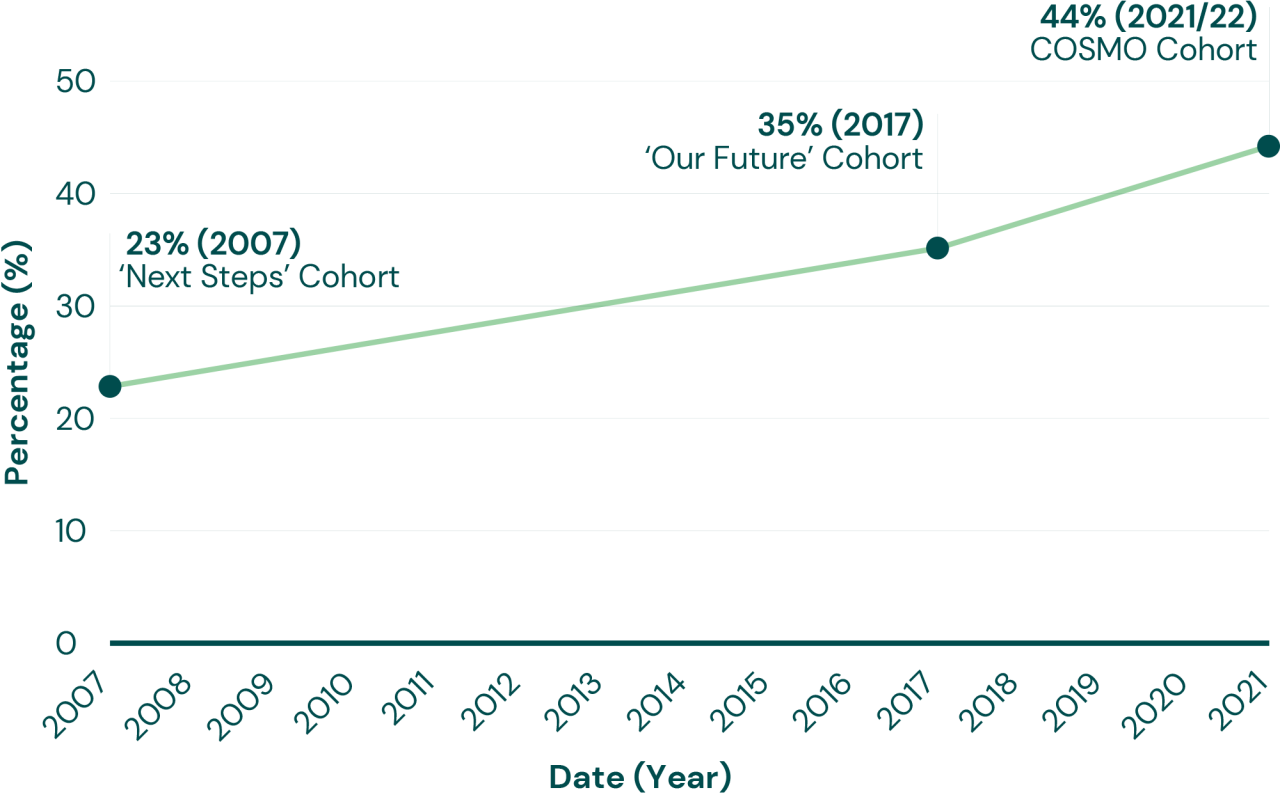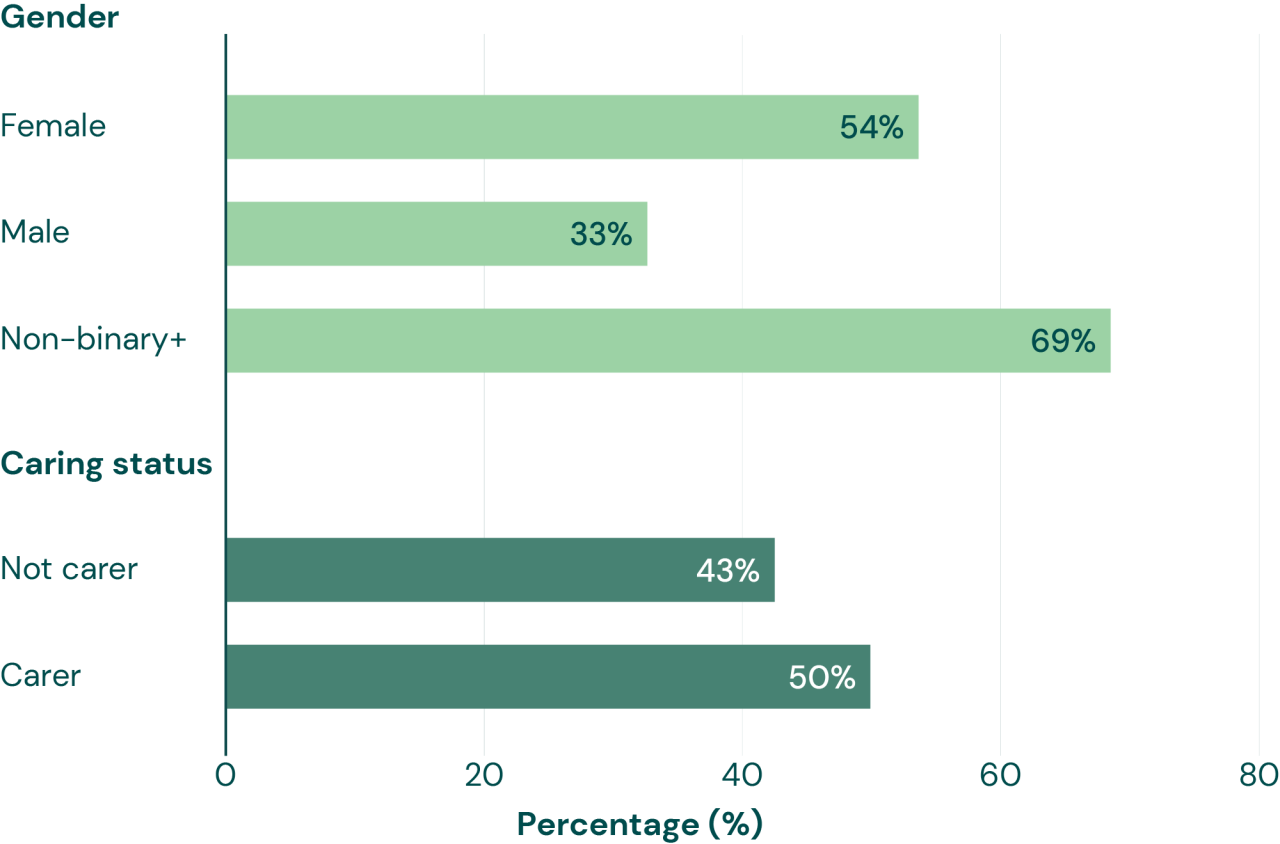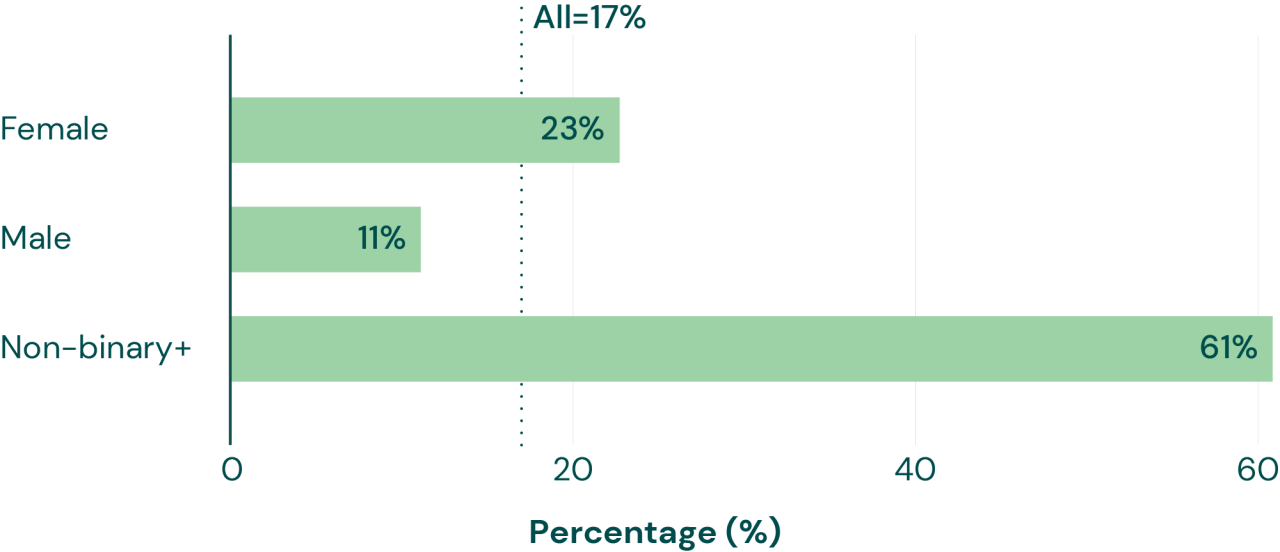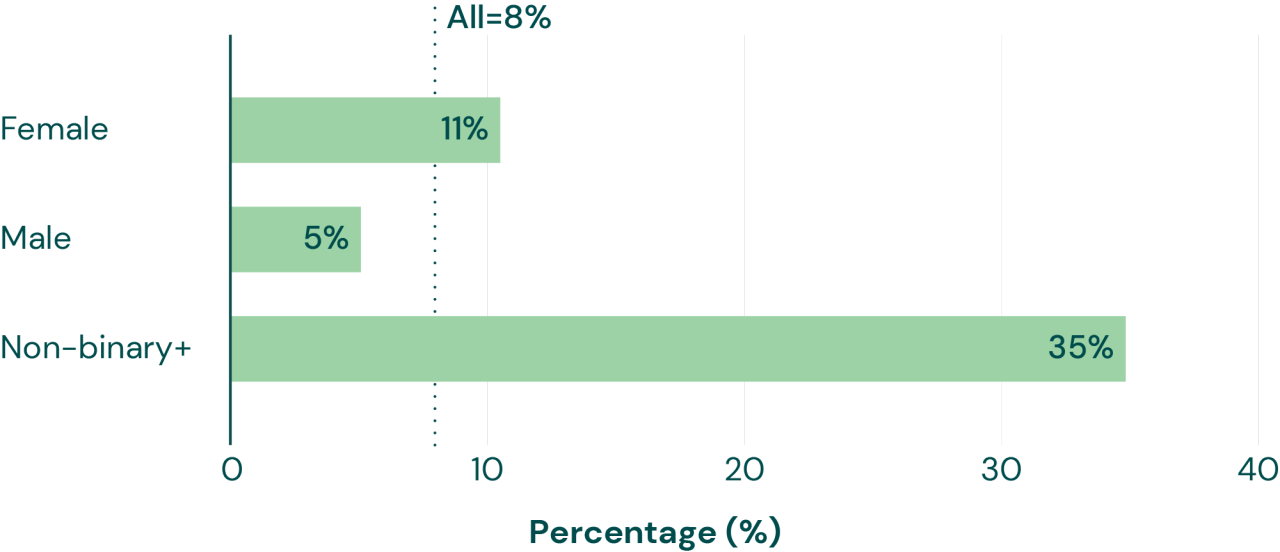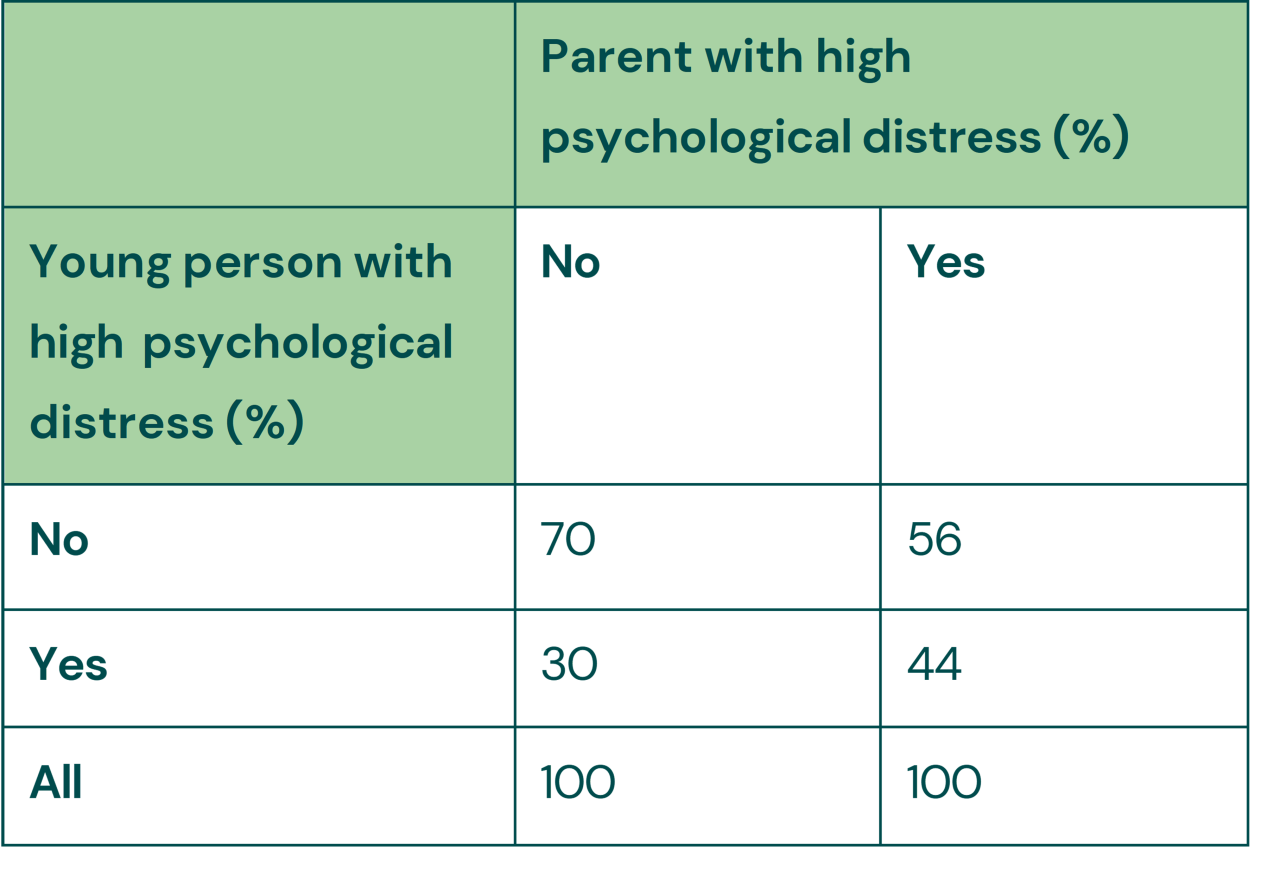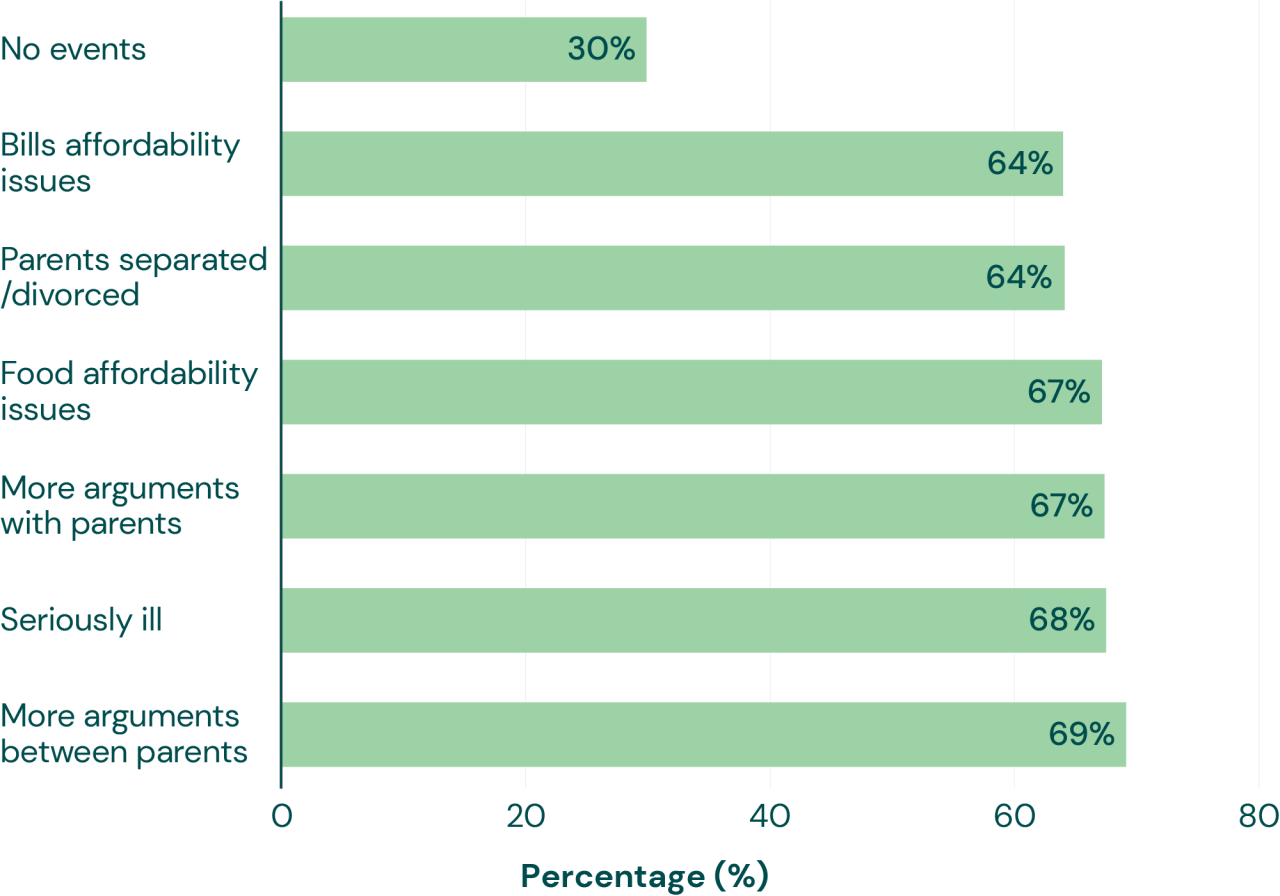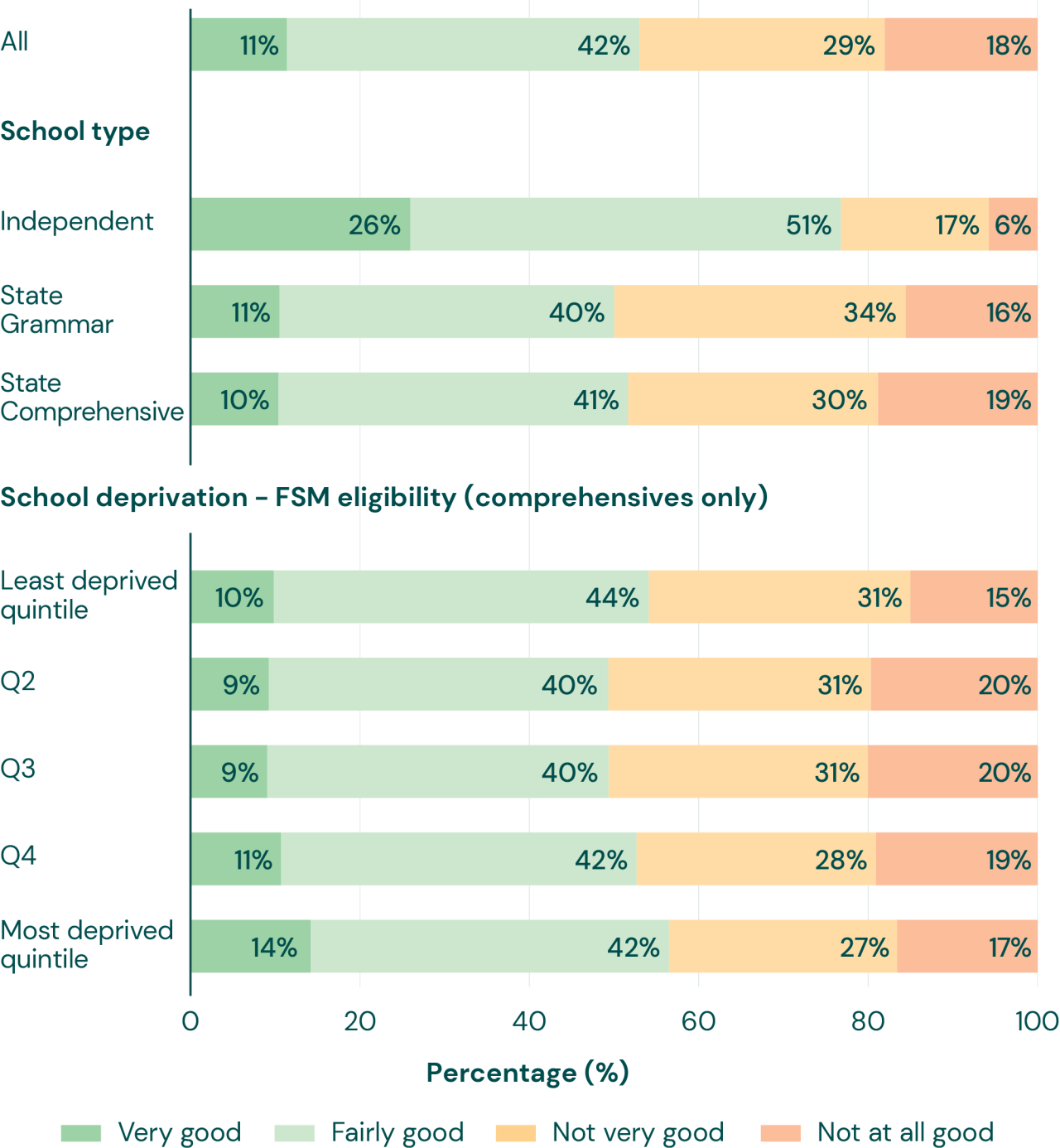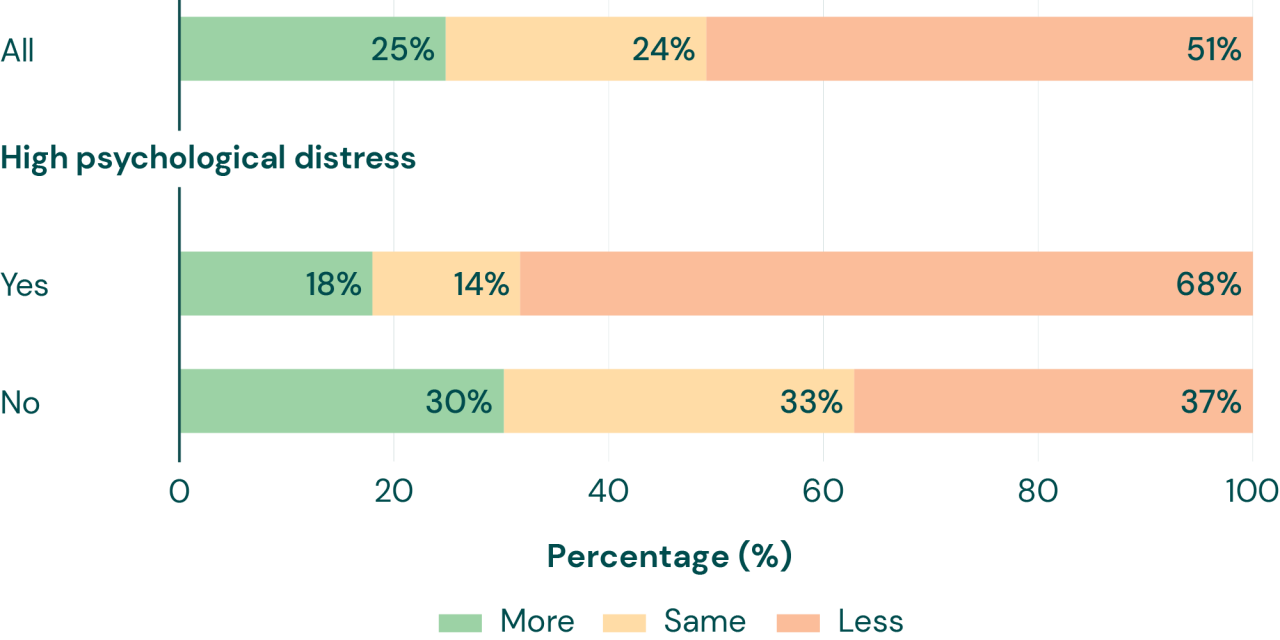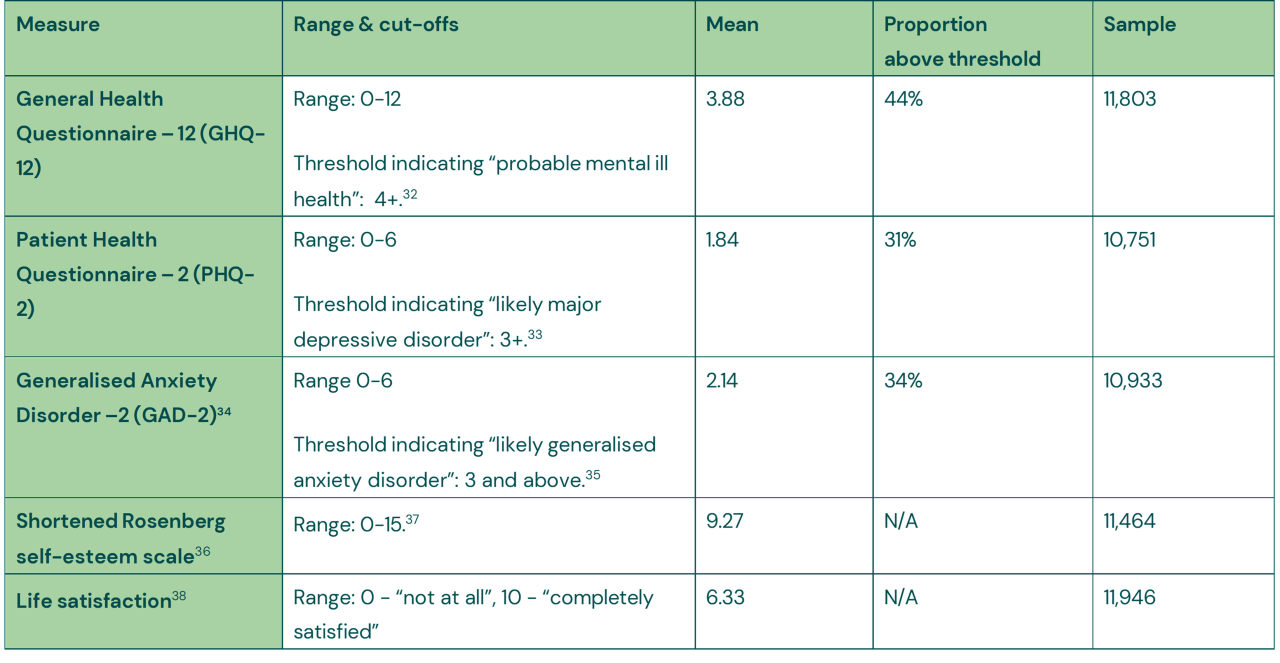Highlights
Over 2 in 5 (44%) 16/17 year olds in England report elevated psychological distress, 9%pts higher than the 35% reporting distress at age 17-18 in the Our Future cohort study (2017) and 21%pts higher than the 23% at age 16-17 in the Next Steps cohort study (2007).
Higher proportions of elevated psychological distress were seen among those who reported having long COVID, bad/’severe long COVID’, or who had to shield during the pandemic. For instance, 66% of those with severe long COVID, which largely affected ability to carry out daily activities, reported high psychological distress.
Those who experienced major life events during the pandemic, such as being seriously ill and suffering from food affordability issues, were also more likely to report elevated psychological distress.
There are stark patterns in signs of poor mental health by gender:
Those who identify as female report elevated psychological distress (54%), self-harm (23%) and suicide attempts (11%), compared to those who identify as male (33% report distress, 11% report self-harm and 5% report attempting suicide).
Those who identify as ‘non-binary+’ report high psychological distress (69%) and they are considerably more likely to have self- harmed (61%) or to have attempted suicide (35%) than their peers who identify as male or female.
Over 2 in 5 (44%) young people with a parent who has high psychological distress also report high distress, compared to 30% of those with a parent who does not report high distress.
Half of the pupils from comprehensive or grammar schools rated their school’s mental health support as ‘not very good’ or ‘not at all good’ compared to just a quarter of those attending independent schools.
Half of young people said that they are now less motivated to study and learn as a result of the pandemic, with those who reported high psychological distress 31%pts more likely to say so (68% compared to 37% of other participants).
